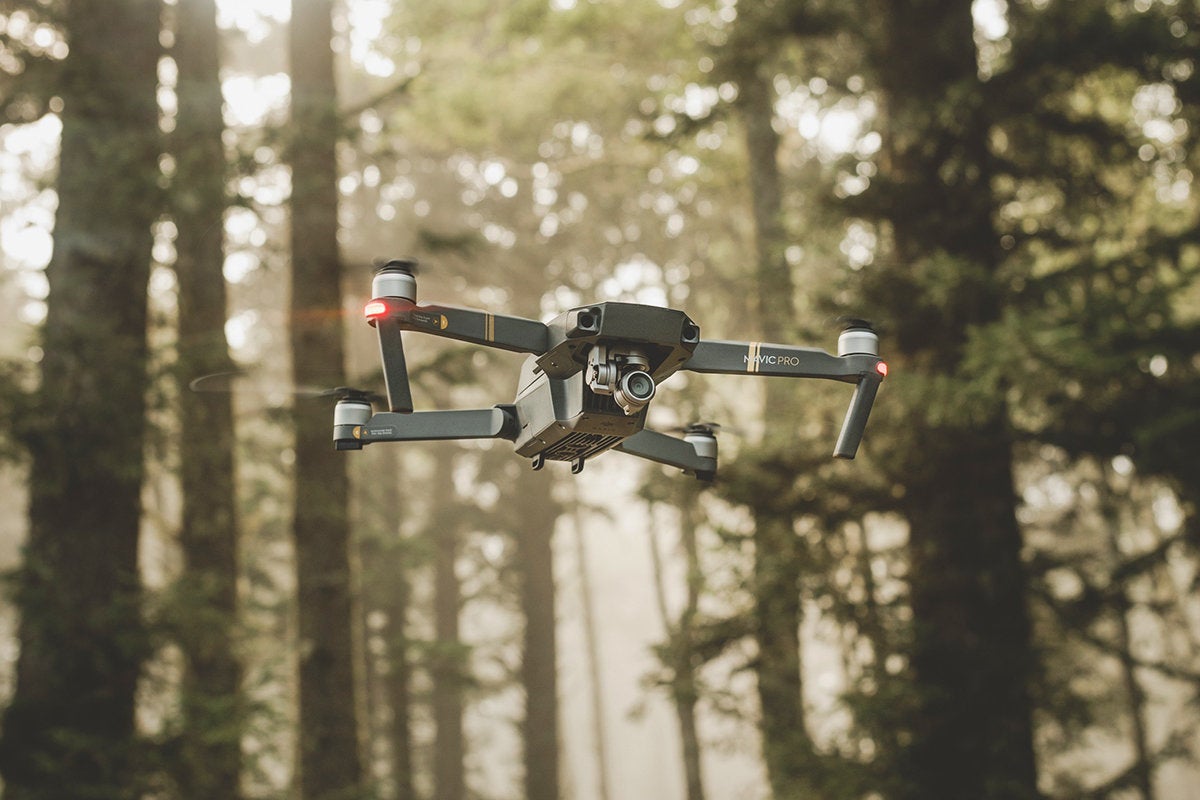Providers address capacity, supply-chain challenges brought on by COVID-19

In terms of physical infrastructure, Netflix had to overcome some supply-chain obstacles. "We have had multiple fires at this point with our supply chain," Temkin said. For example, the primary server manufacturer for Netflix is located in Santa Clara County, Calif., where residents have been ordered to shelter in place. "We had 24 hours to figure out how to get as many of the boxes out of there as we possibly could," he said. Netflix has resolved those supply issues, for the most part, by sourcing elsewhere. "By and large, we've been able to use most of the infrastructure we have deployed. Partners like Equinix have been great about getting cross-connects provisioned quickly where we need them in order to get interconnects beefed up in certain markets," Temkin said. On the content-production side, there's not a lot happening – at Netflix or anywhere else – as studios halt film and TV production to avoid further fueling the outbreak. "One of the big challenges we are trying to figure out is: what parts of it can we restart?" Temkin said.
Key risk governance practices for optimal data security
From cyber security standards to policies around articulating data handling processes and providing transparent updates, the organization needs to clearly understand all of the compliance standards relevant to it. In addition, it needs to make sure its regulatory readiness processes extend to not just internal compliance and risk management but also to compliance with regulations like General Data Protection Regulation (GDPR) and California Consumer Privacy Act (CCPA). This is especially important for heavily regulated industries such as banking, financial services, technology, where many of the organizations’ business models are rooted in customer data To support the two elements above, the organization needs to undertake a sustained effort to seamlessly map out its data handling process across the stages of acquisition, storage, transformation, transport, archival, and even disposal.
The overriding factor that separates IT and security teams is organizational misalignment; the two teams often report up through different management structures. The executives leading each faction -- the CIO and CISO, respectively -- typically have different goals, which are measured and rewarded by disparate key performance indicators (KPIs). In addition, the CIO is often perceived as being higher in the executive pecking order. To create a culture of shared security across the organization, give the CISO and other IT security leaders more status and authority. Include them in the strategy, planning and early development phases of new IT and application projects and treat them as a trusted partner. Shared authority at the executive level requires shared goals. IT operations and security teams will likely continue to have separate budgets and distinct projects, but hold managers in each organization accountable for common -- or at least comparable and tightly related -- objectives and KPIs.
COVID-19 puts new demands on e-health record systems
IT staffers are also required to update EHR systems as additional clinical workers are drafted for duty. “Some health providers have reported that they're being kept very busy with setting up processes for quickly onboarding new staff and changing their role within the system,” said Jones. “That requires a change in configuration of the EHR in terms of their role-based access, and in some cases it is creating new user accounts.” As workflows are updated to deal with the COVID-19 response, it is important that EHR systems don’t impede clinicians’ work, are straightforward and seamlessly integrate with existing care delivery processes. “The EHR workflow really needs to disappear into the background as providers ramp up to address COVID-19 capacity surges,” said Jones. “At a fundamental level, all EHRs need to be working as intended — now more than ever,” said Bensinger. “And not only clinical workflows and features. You want to be sure that the registration and billing components are also collecting accurate and complete information.
Who’s responsible for protecting personal information?

Americans are split on who should be held most responsible for ensuring personal information and data privacy are protected. Just over a third believe companies are most responsible (36%), followed closely by the individuals providing their information (34%), with slightly fewer holding the government most responsible (29%). Half of Americans don’t give companies (49%) and government (51%) credit for doing enough when it comes to data privacy and protection. Notably, compared to the other countries surveyed, Americans are most likely to put the burden on individuals—in fact, it’s the only country where the individual consumer outranks government as most responsible. “Americans are outliers compared to other countries surveyed in that they are willing to accept a lot of the responsibility in protecting their own data and personal information,” says Paige Hanson, chief of cyber safety education, NortonLifeLock. “This could be the year Americans truly embrace their privacy independence, particularly with the help of new regulations like the California Consumer Privacy Act giving them control over how their data is used.”
Can cloud computing sustain the remote working surge?

Currently, cloud providers are still doing a good job in distributing resources among tenants, but at some point rationing measures may need to be implemented to respond to overwhelming demand. Not all cloud services are going to drown though. Matthew Prince, co-founder and CEO of Cloudflare, said that providers may have “individual challenges spurred by the pandemic” – their ability to cope with the shift in usage is highly dependent on their IT architecture. Major cloud providers such as Amazon have expressed confidence in meeting customer demand for capacity. By and large, public cloud providers seem to be coping well with the skyrocketing demand – there has yet to be any issues of major cloud crashes just yet. What providers should really be concerned about is the challenges that will come post-pandemic. By then, enterprises would have already recognized the unquestionable value of cloud, and will double down on cloud migrations. Cloud providers must make sure that their data infrastructure is prepared to support data at unprecedented scales. Warren Buffet once remarked: “you will only find out who is swimming naked when the tide goes out.”
Writing Microservices in Kotlin with Ktor—a Multiplatform Framework for Connected Systems

Ktor (pronounced Kay-tor) is a framework built from the ground up using Kotlin and coroutines. It gives us the ability to create client and server-side applications that can run and target multiple platforms. It is a great fit for applications that require HTTP and/or socket connectivity. These can be HTTP backends and RESTful systems, whether or not they’re architectured in a microservice approach. Ktor was born out of inspiration from other frameworks, such as Wasabi and Kara, in an aim to leverage to the maximum extent some of the language features that Kotlin offers, such as DSLs and coroutines. When it comes to creating connected systems, Ktor provides a performant, asynchronous, multi-platform solution. Currently, the Ktor client works on all platforms Kotlin targets, that is, JVM, JavaScript, and Native. Right now, Ktor server-side is restricted to the JVM. In this article, we’re going to take a look at using Ktor for server-side development. ... routing, get, and post are all higher-order functions. In this case, we’re talking about taking functions as parameters. Kotlin also has a convention that if the last parameter to a function is another function, we can place this outside of the brackets.
Get ready for the post-pandemic run on cloud

Business seems to change around pain. In the past weeks companies that had already migrated to public cloud had a strategic advantage over those still operating mostly in traditional data centers. Traditional data centers are the responsibility of enterprise IT, and as such they are run by human employees who have to deal with mandatory lockdowns or even self-quarantine and may not be able to operate remotely. I have a CIO friend of mine who has a down physical storage system and a direct replacement sitting next to it, shrink-wrapped and ready to be installed. So far, he can’t get enough qualified staffers physically in the data center to make the swap. As a result, a major system is not operating, and they are losing millions a week. Those who have migrated to public clouds don’t have to deal with such things. The virtual and ubiquitous nature of cloud computing that scared so many IT pros during the past several years is actually one of the major reasons to move to public cloud. The weakness for enterprise IT recently has been the inability to support a physical set of systems that need physical fixes by humans.
Using Zoom while working from home? Here are the privacy risks to watch out for

Privacy experts have previously expressed concerns about Zoom: In 2019, the video-conferencing software experienced both a webcam hacking scandal, and a bug that allowed snooping users to potentially join video meetings they hadn't been invited to. This month, the Electronic Frontier Foundation cautioned users working from home about the software's onboard privacy features. Here are some of the privacy vulnerabilities in Zoom that you should watch out for while working remotely. ... Employers, managers and workers-from-home, beware. Zoom's tattle-tale attention-tracking feature can tell your meeting host if you aren't paying attention to their meticulously-composed visual aids. Whether you're using Zoom's desktop client or mobile app, a meeting host can enable a built-in option which alerts them if any attendees go more than 30 seconds without Zoom being in focus on their screen. If you're anything like me, your Zoom meetings rarely consume your full screen. Jotting down notes in a separate text file, adding dates to calendars, glancing at reference documents or discreetly asking and answering clarifying questions in a separate chat -- these key parts of any normal meeting are all indicators of an engaged listener.
Neural computing should be based on insect brains, not human ones

Marshall is referring to a form of deep-learning computing for which developers are creating electronic architectures that mimic neurobiological architectures that could replace traditional computing. Deep-learning computing falls within artificial intelligence in which computers learn through rewards for recognizing patterns in data. A difference is that in deep learning neural processes are used. Variations include neuromorphic computing that I wrote about here that can analyze high- and low-level detail such as edges and shapes. Bees “are basically mini-robots,” says Marshall, quoted in the Daily Telegraph. “They’re really consistent visual navigators, they can navigate complex 3-D environments with minimal learning and using only a million neurons in a cubic millimeter of the brain.” That size element could grab the attention of developers who are working toward tiny robots that communicate with each other to self-organize and could be used, for example, to move objects in factories.
Quote for the day:
“When I look at...great experiences, it’s often more to do with the DNA than the MBA.” -- Shaun Smith

No comments:
Post a Comment